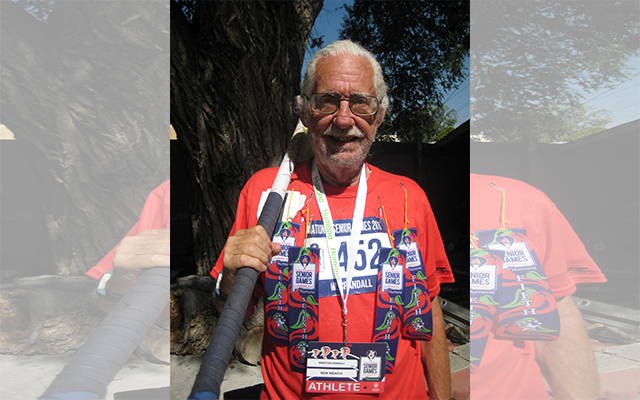
ALBUQUERQUE, New Mexico — After competing in the National Senior Games in June, Winston Crandall was settling into mid-July with a road trip from Albuquerque to his home state of Maine.
Crandall, 79, a retired U.S. Air Force scientist and lieutenant colonel, was among the top 10 finishers in four events at the National Senior Games in Albuquerque last month: the pole vault, the 1,500 meter racewalk, the 1,500 meter power walk, and the 5,000 meter power walk.
“I needed to do something. I pole vaulted for the first time in maybe 18 years,” Crandall said of the inspiration for competing in the games, unofficially known as the National Senior Olympics.
He was in good company, but had a slight advantage being already adapted to the mile-high altitude of Albuquerque, where he and his wife Kathie live. Among the elder athletes was an 84-year-old woman from Vermont who pole-vaulted about two inches lower than he did, Crandall said.
“I’ve always been active. Fidgeters tend to be active. I’ve always been kind of a fidgeter.”
Crandall, who delivered the Star-Herald with his brother as a youngster in the early 1950s, was born in Presque Isle and later moved to Ashland, where he graduated from high school in the class of 1958. At the University of Maine in Orono, Crandall studied engineering physics and developed his passion for pole vaulting, earning a letter on the track team.
He went on to have a successful and varied career with the U.S. Air Force, working as a meteorologist and atmospheric scientist doing everything from forecasting the weather for pilots to researching laser beams and sound waves. His career took him all over, including Georgia,Texas, Thailand, Ohio, and later on, New Mexico. In 1981, he was chief staff meteorologist during the first three return landings of the U.S. space shuttle to Edwards Air Force Base.
All the while, pole vaulting remained something that appealed to him as a feat that combines multiple athletic skills and takes athletes up into the air and then back down.
“I put it away for years and years and every 10 or 15 years I got interested in it again. When I retired, I bought a pole vault. It got a lot of use in the last two years.”
Crandall said he learned a lot about staying active in retirement while training for the event, and then participating in it.
“I can still do it,” he said of pole vaulting. “It’s using almost all of your muscles in one way or the other. You’ve got to be in pretty good shape.”







